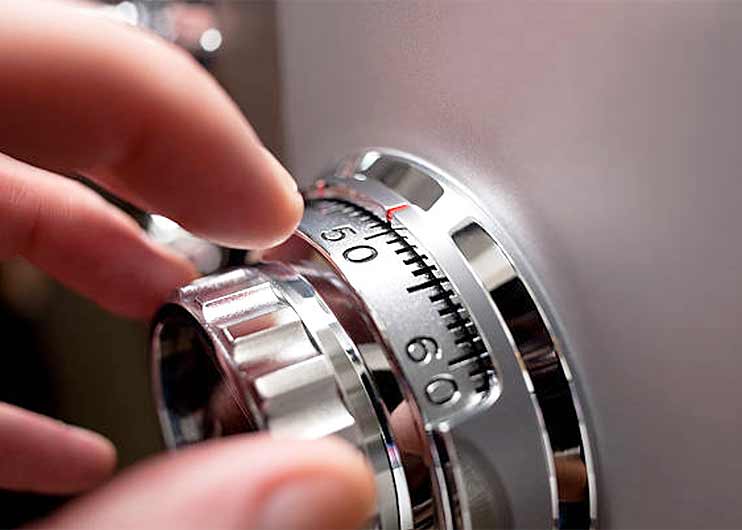Learn How to Hide Gold and Silver
Storing gold and silver at home can save you a lot of money. For many people, storing gold with a company costs anywhere from 1% to 1.5% of net asset value (NAV) per year. On one hand, many fund managers charge more than that. On the other, that comes to $100 for roughly every 7 troy ounces of gold, at the time of writing. In fact, it costs you even more than that because you will most likely be paying monthly, and that means you're probably paying even more when you account for the time value of money.
So What Alternatives Do You Have?
First, you could go to the bank, right? Well it turns out most banks are limited in insurance, and their boxes cost money too (if you can get one). More frighteningly, most banks will disclose and/or turn over assets to the government without delay. So what then? Your second option is to store your precious metals at home. The downside to home storage is that it's less secure. All it takes is one burglary, or an opportune thief, and your precious metals could be gone forever.
What about insurance? If you've got a fair chunk of your net worth invested in gold and silver, it's worth considering protecting it. But how much does insurance cost? What if you are not comfortable declaring how much metal you have? It makes sense to insure no matter what, but do you really want to go through that process? Figuring out how to hide gold and silver well at home can help.
Anywhere too obvious and the risk of it being stolen will be too high for you have to peace of mind. Here's a good rule of thumb: if you've seen it in a movie it's too obvious. That rules out sock drawers, under the floorboards, the freezer, or an old cookie jar. Try to think more creative. Here's a useful list of places not to hide your valuables.
How to Hide Gold and Silver with Diversion Safes
One of the most secure options is investing in a home safe. This is also a costly option. You might not find this cost-effective if you're not storing too much gold and silver. Diversion safes, such as those available from The Home Security Superstore, are a popular choice. This is doubly true for those not wanting to shell out thousands of dollars on the real thing. These are storage spaces disguised as regular household items, such as books, plants or clocks. The sort of things that thieves wouldn't think to steal.
Are you a creative person? If so, you and other creative-minded homeowners may be able to create your own diversion safes. Take a regular household item and carve out some storage. Just make sure it's not something that your friends, housekeeper, gardener, or kids could stumble across.
Diversify your Safes
Diversification is a great way to ensure thieves don't make away with all of your gold and silver. When you buy gold or silver bullion, think about where you are going to store it. If you can store your gold and silver in multiple safes, there's far less chance of it all being discovered. Remember that you need to hide your safe just as much as the gold and silver. Consider storing some of it away from the home. In so doing, you also diversify against the risk of your house struck being struck by a natural disaster.
More importantly, if all of your safes are wired with security sensors, a thief would be hard pressed to break into all of them before the police arrive. If you also use diversion safes, think about setting up a dummy safe that would get triggered first. You might do so, for example, with a standard closet safe.
Home Insurance is a Must
Now it is possible that your home insurance will cover the loss of your gold and silver, for example in the event of a burglary. Smart collectors and investors will make sure their insurer knows how much gold or silver is stored in your house in CAD or USD. In doing so, you accomplish two things.
First, you make sure that your insurance will cover you for that amount. Be sure to update regularly, however, so precious metals insurance as gold and silver can increase in price as time goes on. Second, you accomplish something more important in knowing that your insurance actually does cover your metals.
Tell Only One Person Where Your Gold and Silver is Kept
You probably should tell one confidante where your gold or silver is hidden and how to get to it. That should be someone you can trust not to tell anyone else. Think about it. If you don't tell anyone and something tragic happens to you, you're out of luck. There is no way that your gold or silver can be passed on. Moreover, the last thing you want is for it to get lost or seized by the government. That's why burying it in your backyard might not be the best idea.
Why not tell too many people? It is not recommended to tell more than one person where your gold or silver is, or even that you have it. The more people know that you have gold or silver stored in your house, the higher the risk of being targeted for theft. Remember that a secret is about as likely to get out as the square of the people who know it.
Learning to Hide Gold and Silver at Home Saves Money, but Increases Risk.
Even if it's stored somewhere super-secure, armed robbers who know that it's somewhere in the house could get the better of you. They could enter your home and put you in a compromising position. If you don't want that kind of headache, then you might better understand why people store gold and silver in vaults. Learning how to hide gold and silver will keep it safer but it will never entirely remove the risk of dangerous situations around you and your loved ones.
Ideally, your home will be equipped with security devices that are of high enough quality to further significantly reduce the odds of theft. Again, though, if this all sounds a bit risky, you should consider storing your gold and silver in a vault on someone else's property. You might even think about international duty-free vaults in countries like Singapore or Switzerland. This is the safest option and if it helps you sleep better at night, it might be worth the investment.

